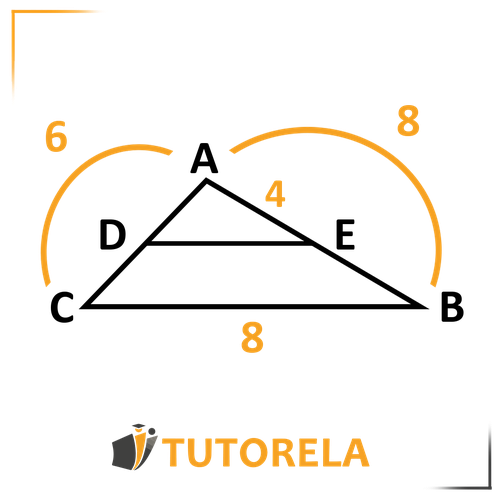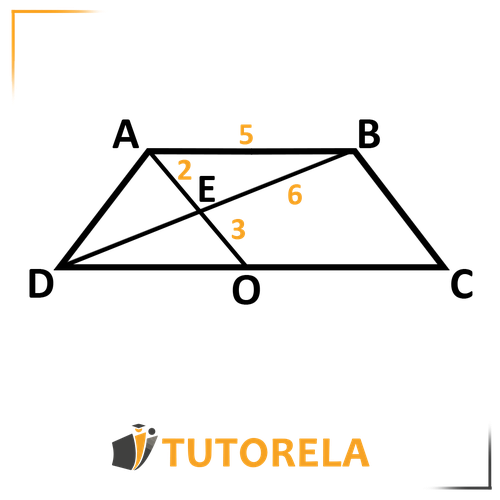
If:
Then:

If:
Then:

If
then:

If
then:
According to Thales' theorem, if there are two parallel lines and one of them intersects the sides of a triangle, a proportion can be identified between the segments cut on the sides.
This can be observed in the diagram below:

According to Thales' theorem –
If:
then:
Note- The two lines must be parallel to satisfy Thales' theorem.
The triangle does not need to be isosceles at all. Notice that it's the ratio that is equal.
Additional note:
If it is true that:
We can determine that:
According to the converse of Thales' theorem.
Exercise:

Given:
AD=4
Find the length of
Solution
According to Thales' theorem, we can determine that if
then
All segments are given except for . Let's call it and insert the given data into the equation:
Let's cross multiply to obtain the following:
We determined the length of .
The first extension of Thales' theorem states that:

If
then:
Important emphasis:
Note that the denominators consist of the entire side and not just part of it.
Note:
If the following is true:
We can determine that:
according to the converse of Thales' Extension Theorem 1.
Let's practice:

Given:
Determine the length of and the length of
Solution:
According to the Extended Thales Theorem we know that:
Let's mark the given information in the figure to better understand how to progress:

According to this ratio:
We can find and thus obtain the length of which we need to find.
Let's insert the data into the relevant ratio and call as
Let's multiply crosswise as follows:
Divide by and obtain:
From this we determine that:
From here we can determine that if and
then given that the whole equals the sum of its parts.
Now we'll move on to finding
According to this ratio
Let's substitute the given values and let
We obtain the following:
We can determine that
Therefore
According to the second extension of Thales' theorem

If
then:
Pay attention -
This hourglass shape can appear as a trapezoid or circle as part of an exercise in a question.
When you identify such an "hourglass," know that there's a high chance you'll need to use the Extended Thales' Theorem.
Note:
If it holds that:
We can determine that:
according to the converse of Thales' Extended Theorem.
Exercise:

Given:
is a trapezoid
is a median to side
Find the length of
and the length of
Solution:
From the illustration, we can identify the "hourglass" and understand that we'll probably need to use the extended Thales theorem.
We are given that is a trapezoid, so we can conclude that:
And therefore:
Since is part of
According to the Extended Thales' Theorem:
We have all the data except for which we'll call .
Let's insert this into the equation as follows:
Multiply crosswise:
Therefore:
Determine .
Since is a median, we'll determine using the extended Thales theorem II and multiply it by in order to obtain
According to extended Thales theorem II:
Let's insert the given values and let
We obtain the following:
Therefore: